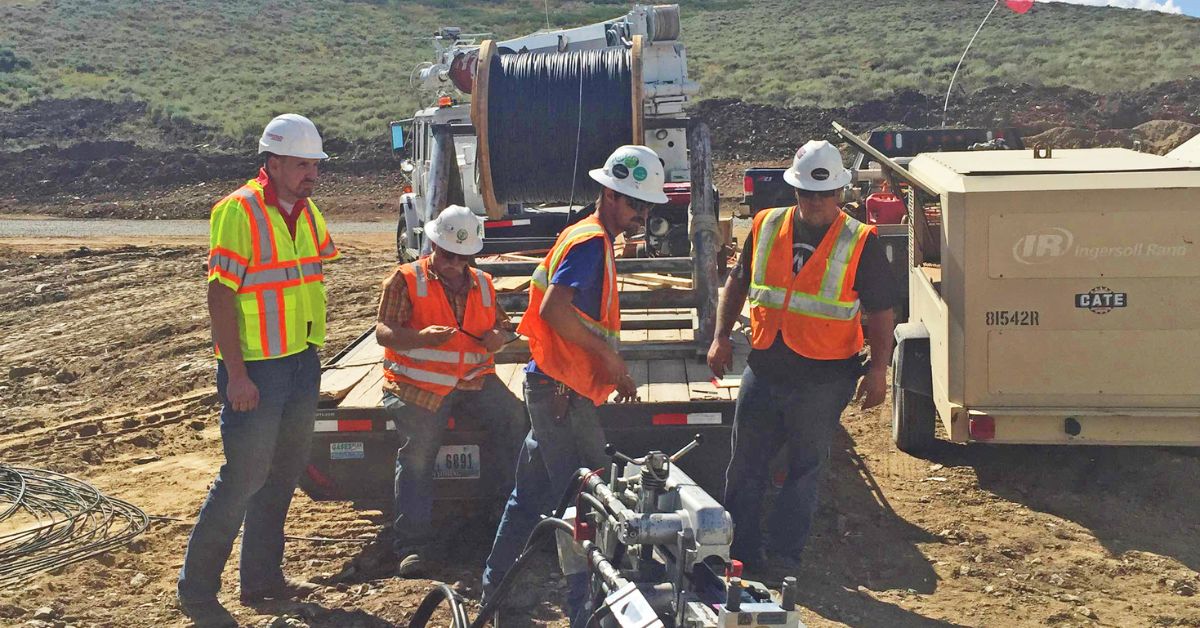No products in the cart.
How To Navigate Permitting Delays in Rural Broadband Projects
Home How To Navigate Permitting Delays in Rural Broadband Projects
- Home
- Resource Hub
- Millennium Blog
- How To Navigate Permitting Delays in Rural Broadband Projects

Expanding rural broadband is essential, but permitting delays often disrupt timelines, inflate budgets, and postpone connectivity for underserved communities. These delays, affecting nearly every project, can extend deployments by months or even years.
This guide offers ISPs and contractors strategies to streamline the permitting process, minimize delays, and keep projects on track. By learning how to navigate permitting delays in rural broadband projects, teams can deliver critical broadband infrastructure more efficiently.
Understanding the Root Causes of Permitting Delays
Complex Regulatory Landscape
Rural broadband projects must navigate multiple layers of regulatory approval. Federal agencies oversee environmental assessments and historical preservation requirements. State departments manage utility crossings and right-of-way approvals. Local municipalities control building permits and zoning compliance.
Each agency operates under different timelines, requirements, and approval processes. Federal environmental reviews can take 6-12 months, while local building permits might be processed within weeks. This variance creates coordination challenges and potential bottlenecks throughout the approval cycle.
Lack of Coordination Between Agencies
Government agencies often operate in isolation, leading to duplicated efforts and conflicting requirements. An environmental assessment approved by one agency might require modifications to satisfy another agency’s standards. Communication gaps between federal, state, and local authorities create additional delays as agencies request clarifications or modifications to previously approved plans.
These coordination issues frequently surface when projects cross multiple jurisdictions. A fiber route spanning three counties might encounter different permitting standards, documentation requirements, and approval timelines in each location.
Environmental and Historical Preservation Concerns
Rural broadband projects often traverse environmentally sensitive areas or regions with historical significance. Environmental assessments examine potential impacts on wetlands, endangered species habitats, and protected ecosystems. Historical preservation reviews evaluate possible effects on archaeological sites and culturally significant locations.
These assessments require specialized documentation, field surveys, and expert analysis. Projects affecting National Environmental Policy Act (NEPA) protected areas face particularly lengthy review processes, as agencies must demonstrate minimal environmental impact before granting approvals.
Community Opposition
Local resistance can significantly slow permitting processes. Community members might oppose fiber installations due to aesthetic concerns, property value worries, or misunderstandings about project benefits. Vocal opposition often prompts additional public hearings, extended comment periods, and supplementary documentation requirements.
Opposition frequently stems from inadequate communication about project scope, benefits, and construction impacts. Communities might express concerns about tree removal, temporary traffic disruptions, or underground utility conflicts without understanding mitigation measures.

Strategies for Mitigating Permitting Delays
Detailed Feasibility Studies
Comprehensive feasibility studies identify potential permitting challenges before project initiation. These studies examine environmental considerations, historical preservation requirements, utility conflicts, and regulatory compliance needs. Early identification allows project teams to develop mitigation strategies and allocate appropriate resources for complex approvals.
Feasibility studies should include detailed route analysis, environmental screenings, and stakeholder mapping. This upfront investment prevents costly project modifications and delays during the permitting phase.
Comprehensive GIS Network Design
Professional GIS network design services create efficient, cost-effective network layouts that minimize permitting complications. Skilled designers route fiber paths to avoid environmentally sensitive areas, historical sites, and complex utility crossings wherever possible.
Strategic network design reduces the number of required permits and simplifies approval processes. Designers familiar with regional permitting requirements can recommend routing modifications that expedite approvals without compromising network performance.
Community Meetings
Transparent communication with community stakeholders builds support and reduces delays caused by opposition. Well-structured community meetings address resident concerns, explain project benefits, and outline construction timelines. These sessions allow project teams to address misconceptions and gather valuable local input.
Effective community engagement includes multiple touchpoints throughout the project lifecycle. Initial meetings introduce the project concept, while follow-up sessions provide updates on permitting progress and construction schedules.
Collaboration with Local Authorities
Building relationships with key decision-makers streamlines the approval process. Regular communication with permitting officials helps project teams understand specific requirements, documentation preferences, and review timelines. These relationships often prevent minor issues from becoming significant delays.
Successful collaboration includes early consultation with permitting offices, regular progress updates, and proactive problem-solving when issues arise. Local authorities appreciate contractors who demonstrate professionalism and responsiveness throughout the permitting process.
Standardized Documentation
Consistent documentation formats expedite permit reviews and reduce the likelihood of requests for additional information. Standardized templates ensure all required information appears in expected locations, making reviewer evaluation more efficient.
Standardization should extend beyond document formats to include mapping standards, technical specifications, and environmental assessment methodologies. This consistency helps reviewers quickly locate relevant information and reduces processing delays.
Digital Submission Systems
Technology-enabled submission systems accelerate permit processing and improve tracking capabilities. Digital submissions eliminate postal delays, provide immediate confirmation of receipt, and enable real-time status monitoring. Many agencies now require or prefer electronic submissions for faster processing.
Digital systems also facilitate easier document revisions and resubmissions when agencies request modifications. Electronic workflows often integrate with agency review systems, further reducing processing times.
Consulting Services
Specialized consulting firms navigate complex permitting requirements with proven expertise. These firms understand agency-specific preferences, documentation requirements, and review processes. Experienced consultants often maintain relationships with key agency personnel, facilitating smoother approvals.
Permitting consultants provide value through their knowledge of regulatory nuances, ability to anticipate potential issues, and skill in preparing comprehensive documentation packages. Their expertise often prevents delays that inexperienced teams might encounter.
Funding and Grants Guidance
Exploring funding opportunities like the Millennium Infrastructure Fund can provide resources to support comprehensive permitting efforts. Adequate funding enables thorough planning, professional consulting services, and proper documentation preparation.
Grant programs often include permitting support as eligible expenses, recognizing the critical role of regulatory approval in project success. Understanding available funding sources helps teams allocate sufficient resources for effective permitting strategies.

The Role of Efficient Equipment and Material Supply
Timely Material Delivery
Reliable supply chains ensure materials arrive when needed, preventing construction delays that can compound permitting issues. Late material deliveries can force project schedule modifications, potentially requiring permit amendments or extensions.
Successful contractors establish relationships with suppliers who understand the critical nature of project timelines. These partnerships include clear delivery schedules, backup supply options, and communication protocols for potential delays.
Local Warehousing
Staging inventory near job sites provides flexibility to respond quickly to permit approvals and changing project requirements. Local warehousing eliminates shipping delays and enables rapid project mobilization once permits are approved.
Strategic inventory placement reduces the risk of material shortages that could delay construction and potentially affect permit validity. Many permits include time limitations that require project completion within specified timeframes.
Vendor Relationships
Working with suppliers who provide top-quality materials reduces the risk of equipment failures that could necessitate permit modifications. Reliable vendors understand project specifications and deliver materials that meet regulatory requirements.
Strong vendor relationships include clear communication about delivery schedules, material specifications, and quality standards. These partnerships support successful project completion within permitted parameters.
Building Success Through Strategic Permitting
Understanding how to navigate rural broadband permitting delays can minimize their impact on project timelines and budgets. Success requires comprehensive planning, proactive stakeholder engagement, streamlined processes, and reliable supply chain management.
Are you ready to streamline your next rural broadband project? Contact Millennium today to discover how our comprehensive fiber optic cable supplier services, from detailed network design to reliable material delivery, can support your permitting success and project completion goals.
